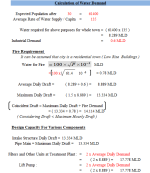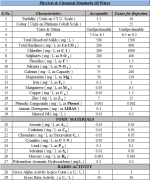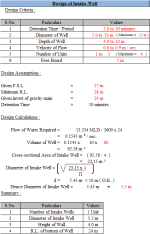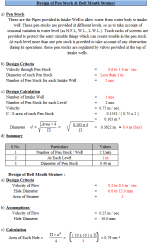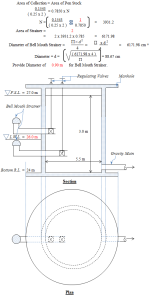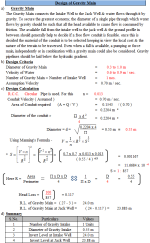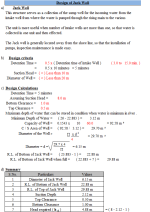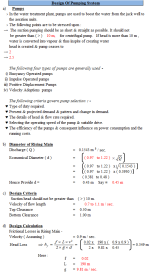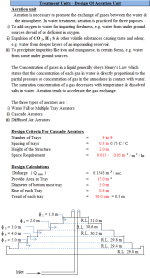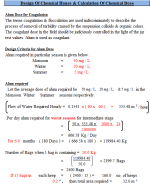Complete Water Supply Treatment Plant
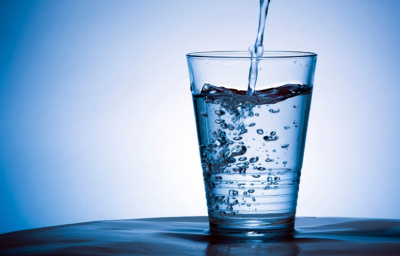
Description
A Complete Water Supply Treatment Plant is a facility that treats raw water from a source (such as a river or lake) to make it safe for drinking and other uses. Here are the steps involved in designing such a plant:
-
Calculation of Water Demand: This involves estimating the amount of water that will be required by the community or area being served by the plant. This will depend on factors such as population, industrial demand, and agricultural demand.
-
Physical & Chemical Standards Of Water: The physical and chemical standards for drinking water are set by regulatory bodies such as the World Health Organization (WHO) and local health authorities. These standards define acceptable levels for parameters such as turbidity, pH, dissolved solids, and microbial contaminants.
-
Comparison of Given Data & Standard Data and Treatment Proposed: The raw water quality will be analyzed to determine its characteristics and how it compares to the physical and chemical standards. Treatment processes will be proposed based on the analysis.
-
Design of Intake Well: The intake well is the structure that collects raw water from the source. The design will depend on the specific site conditions, such as the depth of the water and the geology of the area.
-
Design of Pen Stock & Bell Mouth Strainer: The penstock is a gate or valve that controls the flow of water into the treatment plant. The bell mouth strainer removes large debris and sediment from the water.
-
Design of Gravity Main: The gravity main is a pipeline that carries the water from the intake well to the treatment plant. The design will depend on factors such as the distance, elevation change, and flow rate.
-
Design of Jack Well: The jack well is a structure that collects water from the gravity main and pumps it to the treatment units. The design will depend on factors such as the flow rate and head requirements.
-
Design Of Pumping System: The pumping system includes pumps, valves, and control systems that move water through the treatment process. The design will depend on the flow rate, pressure requirements, and other factors.
-
Design of Rising Main: The rising main is a pipeline that carries water from the jack well to the treatment units. The design will depend on factors such as the distance, elevation change, and flow rate.
-
Treatment Units - Design Of Aeration Unit: The aeration unit adds air to the water to remove volatile organic compounds and improve taste and odor. The design will depend on factors such as the flow rate and oxygen requirements.
-
Design Of Chemical House & Calculation Of Chemical Dose: Chemicals such as chlorine and alum are used to disinfect and coagulate the water. The design of the chemical house will depend on the specific chemicals being used, and the dosage will depend on the characteristics of the water.
-
Lime - Soda Process: The lime-soda process is a method for softening hard water by adding lime and soda ash. The design will depend on factors such as the hardness of the water and the desired level of softening.
-
Design Criteria for Mechanical Rapid Mix Unit: The mechanical rapid mix unit mixes chemicals and water together to promote coagulation. The design will depend on factors such as the flow rate and mixing requirements.
-
Design Of Clariflocculator: The clariflocculator is a unit that separates suspended solids from the water through sedimentation and flocculation. The design will depend on factors such as the flow rate and settling characteristics of the solids.
-
Design Of Rapid Gravity Filter: The rapid gravity filter removes remaining suspended solids from the water through filtration. The design will depend on factors such as the flow rate, filter media, and backwash system.
-
Design Of Disinfection Unit: The disinfection unit kills remaining microorganisms in the water
Calculation Preview
Full download access to any calculation is available to users with a paid or awarded subscription (XLC Pro).
Subscriptions are free to contributors to the site, alternatively they can be purchased.
Click here for information on subscriptions.

